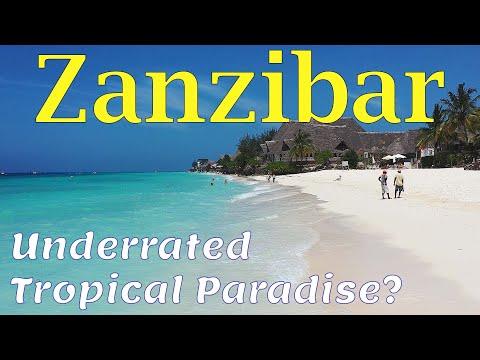When I first set foot in Zanzibar, I was enveloped by the warm embrace of a tropical paradise unlike any other. The moment I stepped off the plane, I was greeted by the rich scent of cloves and the gentle whisper of the Indian Ocean breeze. This archipelago off the coast of East Africa was a realm of enchantment, and I felt as though I had been transported into a dream.
My first days in Zanzibar were spent exploring the pristine beaches that seemed to stretch on forever. Each morning, I wandered along the powdery white sands of Nungwi Beach, where the turquoise waters sparkled under the African sun. The contrast between the vivid blue of the sea and the soft, white sand was breathtaking. As I walked along the shoreline, the gentle lapping of the waves against the shore was a soothing soundtrack, and the occasional local fisherman in his dhow, a traditional wooden sailboat, added a picturesque charm to the scene.
The beach was a haven of tranquility, but as I ventured further, I discovered that Zanzibar had much more to offer. Stone Town, the heart of Zanzibar City, was a maze of narrow alleys and bustling bazaars that seemed to pulse with the island’s rich history and culture. The architecture was a blend of Swahili, Arab, Persian, and Indian influences, a testament to Zanzibar’s historical position as a major trading hub.
Wandering through the winding streets of Stone Town, I was captivated by the intricate carvings on the wooden doors of the historic houses. Each door seemed to tell a story, with its ornate patterns and detailed craftsmanship. The alleys themselves were alive with the scents of spices and the sounds of daily life. I visited the spice markets, where the air was thick with the aroma of cloves, cinnamon, and cardamom. I learned that Zanzibar is often called the “Spice Island,” and it was easy to see why. The spice farms, which I later visited, were a sensory overload in the best possible way. I saw vanilla orchids, pepper vines, and nutmeg trees, and I couldn’t resist buying a few spices to bring home as souvenirs.
Stone Town’s history was equally compelling. I visited the House of Wonders, an old palace that now serves as a museum, and the old slave market, where I could feel the weight of the past. The history of the island was poignant and complex, and each historical site I visited added layers to my understanding of Zanzibar’s rich cultural tapestry.
The island’s natural beauty wasn’t confined to the beaches. I explored Jozani Forest, a lush, green sanctuary that is home to the endangered red colobus monkeys. Trekking through the forest, I was enveloped by the verdant foliage and the chirping of birds. The monkeys, with their distinctive red fur and playful antics, were a highlight of the visit. The forest also featured a mangrove boardwalk, which offered a unique perspective on this vital ecosystem and its role in protecting the coastline.
Zanzibar’s sunsets were nothing short of magical. I spent evenings watching the sky explode into hues of pink, orange, and purple as the sun dipped below the horizon. The sunsets over the Indian Ocean were a mesmerizing display of colors, and I found myself captivated by the beauty of it all. Often, I would sit on the beach, sipping a refreshing coconut drink, and simply take in the view. The tranquil ambiance of the evenings was a perfect counterpoint to the vibrancy of the daytime activities.
The people of Zanzibar were as warm and inviting as the climate. The local inhabitants, known for their friendliness and hospitality, made my stay all the more enjoyable. I had the chance to engage with local artisans, who were eager to share their crafts and stories. From handwoven kanga fabrics to intricately beaded jewelry, each piece was a testament to the island’s rich artistic heritage. Dining with locals was an experience in itself. I was introduced to a variety of traditional Zanzibari dishes, such as biryani and pilau, which were rich in flavor and spiced to perfection.
The cultural fusion of Zanzibar was also evident in its festivals and events. During my stay, I attended a local festival that showcased traditional music and dance. The rhythm of the drums and the energetic movements of the dancers created an infectious atmosphere of celebration. It was a vivid reminder of the island’s vibrant cultural life and its deep-rooted traditions.
As my time in Zanzibar came to an end, I felt a pang of reluctance to leave this tropical paradise. The island had captured my heart with its stunning landscapes, rich history, and the warmth of its people. Zanzibar had been more than just a destination; it was an experience that left an indelible mark on me. The memories of its beaches, the charm of Stone Town, the beauty of its natural landscapes, and the friendliness of its people would stay with me long after I left. Zanzibar was indeed a tropical paradise, a place where the magic of Africa revealed itself in the most enchanting ways.
